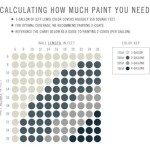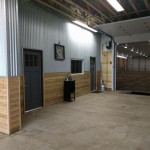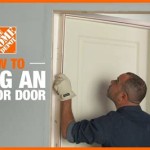Whether you’re looking to spruce up your home or office, painting the interior walls and ceilings is a great way to give it a fresh new look. But painting walls and ceilings by hand can be a tedious and time-consuming process. That’s why a paint sprayer is a great tool to have on hand for this type of job. Paint sprayers make painting a breeze, and they can help you get the job done quickly and efficiently. But with so many different types of paint sprayers on the market, it can be hard to know which one is the best for interior walls and ceilings.
This article will provide you with some tips on choosing the best paint sprayer for your interior walls and ceilings. We’ll discuss the different types of paint sprayers and their features, so you can make an educated decision on which one to buy. We’ll also cover the pros and cons of each type of paint sprayer, so you can decide which one is best for your needs.
Types of Paint Sprayers
The three main types of paint sprayers are airless, HVLP, and air-assisted. Each type has its own set of features and benefits, so it’s important to understand the differences between them before making a purchase. Here’s a brief overview of each type of paint sprayer.
Airless Paint Sprayers
Airless paint sprayers are the most popular type of paint sprayer. They use high-pressure technology to atomize the paint and give you a smooth and even finish. Airless sprayers work best with thick paint and can be used on a variety of surfaces, including walls and ceilings. They are also the fastest and most efficient type of paint sprayer.
HVLP Paint Sprayers
HVLP (High Volume Low Pressure) paint sprayers are the second most popular type of paint sprayer. They use a low-pressure system to atomize the paint, which gives you a more consistent and even finish. HVLP sprayers are great for small jobs, such as touch-ups and areas that require more precision. However, they are not as fast or efficient as airless sprayers.
Air-Assisted Paint Sprayers
Air-assisted paint sprayers are a newer type of paint sprayer. They use a combination of air and paint to create a smooth and even finish. Air-assisted sprayers are great for larger jobs, since they can cover a larger area in less time. They are also more efficient than HVLP sprayers, but not as fast as airless sprayers.
Pros and Cons of Paint Sprayers
Now that you know the different types of paint sprayers, let’s take a look at some of the pros and cons of each one. This will help you decide which type is best for your needs.
Airless Paint Sprayers
- Pros:
- Fast and efficient
- Can handle thick paints
- Great for large jobs
- Cons:
- May require more masking and taping
- Can be messy and difficult to clean up
- More expensive than other types of sprayers
HVLP Paint Sprayers
- Pros:
- Great for precision jobs
- Easy to clean up
- Less expensive than other types of sprayers
- Cons:
- Not as fast or efficient as airless sprayers
- Not ideal for thick paints
- May require multiple coats to get a smooth finish
Air-Assisted Paint Sprayers
- Pros:
- Great for large jobs
- More efficient than HVLP sprayers
- Less messy than airless sprayers
- Cons:
- Not as fast as airless sprayers
- More expensive than HVLP sprayers
- May require multiple coats to get a smooth finish
Conclusion
Choosing the right paint sprayer for your interior walls and ceilings can be a daunting task. But by understanding the differences between airless, HVLP, and air-assisted paint sprayers, you can make an educated decision on which one is best for your needs. We hope this article has been helpful in providing you with the information you need to find the best paint sprayer for your project.





![BEST Emulsion Paint Sprayers UK [Spray Guns for Interior Walls] Paint](https://i2.wp.com/paintsprayerguide.com/wp-content/uploads/2019/10/10-Best-Latex-Paint-Sprayers.jpg)



![Best Paint Sprayer For Painting Interior Walls & Ceilings [2021]](https://i2.wp.com/paintsprayerpicks.com/wp-content/uploads/2020/06/REXBETI-REX006-Paint-Sprayer-1-1-1536x1023.jpg)


![Best Paint Sprayer for Ceilings of 2018 [With Full Reviews of Features]](https://i2.wp.com/sprayerguide.com/wp-content/uploads/2017/10/Fuji-2903-T70-Mini-Mite-3-PLATINUM.jpg)


Related Posts








